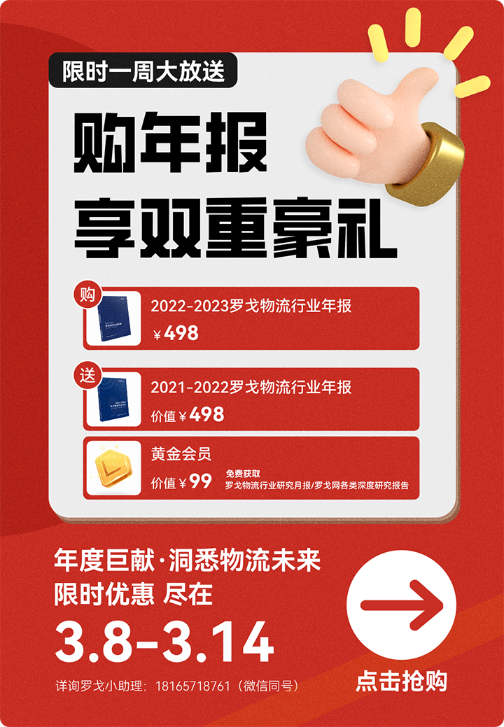
 [罗戈导读]无论是寻源、采购还是简单的购买,全球企业都面临类似挑战。当下采购流程越来越复杂,您需要降低成本的同时提高效率。对于寻源到合同,也面临着数字化的转换。
[罗戈导读]无论是寻源、采购还是简单的购买,全球企业都面临类似挑战。当下采购流程越来越复杂,您需要降低成本的同时提高效率。对于寻源到合同,也面临着数字化的转换。

现代社会,新兴技术有许多机会来发展相对陈旧的S2C流程。即便最初的评估可能认为S2C是具有战略性的,所以需要人为干预,但在某些领域,技术将推动这些变革。
毫无疑问,大量的人工智能(AI)将嵌入到采购战略的开发中。现在,高级的支出分析,机会的识别和外部市场的洞察发展等都是通过人工执行的。在未来,人工智能将展开这些活动,并给品类经理带回这些市场分析,与他们的团队一同研究分析。
此外,像合同元数据提取这样的普通任务正被光学字符识别(OCR)技术所取代,使得合同搜索变得更加容易。前端自助服务记分卡让供应商得以提供最新信息,使供应商风险评估和绩效管理自动化。这将最大程度上减少甚至消除企业采用专人做供应商关系管理的需求。
下面的使用实例说明了新兴技术如何影响S2C的三个子流程: 供应商风险评估、自动化的合同元数据的抓取和合同绩效、以及内部分析。
通过构建供应商风险评估评分功能(如信用评分的Credit Karma),组织可以自动化其风险评估。供应商风险评估得分可以在不需要人工干预的情况下自动生成,供应商自身也可以通过技术积极监控,以更快的速度,更高的准确性和更高的效率,来实时更新风险评估得分。供应商可以查看自己的分数,以了解应该采取什么行动来提高自己的分数。人工智能将模拟认知过程,根据高管信息、对第三方供应商财务信息进行人工智能驱动分析、积极监控来自数千个互联网来源的资讯等综合因素,生成组织的深入完整的风险档案。这些人工智能驱动的供应商风险评估得分就像信用评分算法一样工作,从而允许组织跟上不断变化的环境,并用人工智能驱动活动取代耗时的人工作业。
光学字符识别(OCR)技术将合同照片转换为合同元数据,对协议进行分类和索引,然后将其标记到供应商,从而可以提取和分析元数据。然后,人工智能和机器学习可以执行供应商支出和趋势分析,以提出建议,衡量合同绩效和合规性,并根据里程碑发送自动警报。这些能力将使采购经理能够把时间分配到更战略性的工作上。
目前,技术成熟的组织利用专用的端到端软件平台来满足其采购需求,覆盖整个S2P流程流。因此,组织拥有现成的花费数据存储库。在当前的场景中,系统已经能够分析支出并根据品类、供应商、地理位置、业务单元、成本中心等创建支出概要。通过机器学习算法,人工智能将能够从支出数据中提取颗粒度级别的信息,并通过提供趋势分析、需求预测和历史基准来帮助支持业务决策,不断学习以提高准确性。
例如,通过对历史需求和购买模式的分析,系统将能够进行趋势分析和预测未来需求。过去必须人工寻找,或者有可能被遗漏的大量数据,如今都可以通过系统得到。
Source-to-Contract(S2C):
Digital Transformation Examples
There are many opportunities for emerging technology to evolve dated S2C processes. While initial assessment may be that S2C activities are strategic, and therefore must require human intervention, there are areas where technology will drive change.
Without a doubt, there will be a high volume of artificial intelligence (AI) embedded in the development of sourcing strategies. Currently, advanced spend analytics, opportunity identification and external / market insight development are executed by humans. In the future, AI will enable these activities and bring insight back to category managers to vet with their teams.
Additionally, mundane tasks like contract metadata extraction are being replaced with optical character recognition (OCR) technology, making contract searches easier. Front-end “self-service” scorecards will allow suppliers to provide up-to-date information that allows supplier risk assessments and performance management to be automated. This will minimize or eliminate the need for dedicated supplier relationship management roles.
The use cases below illustrate how emerging technologies could impact three S2C sub-processes: supplier risk assessment, automated contract metadata capture and contract performance, and internal analysis.
Use Case: Supplier Risk Assessments Using AI
By building a supplier risk assessment scoring capability, like Credit Karma for credit scores, the organization could automate its risk assessment. Supplier risk assessment scores could be automatically generated without manual intervention, and the suppliers themselves could be actively monitored through technology to maintain updated risk assessment scores in real time, with greater speed, accuracy and efficiency. Suppliers could view their own scores to understand what actions to take to improve their scores over time. AI would simulate cognitive processes to generate in-depth risk profiles of organizations based on a combination of factors such as information found on executive officers, AI-driven analysis performed on financial information of third-party suppliers, and actively monitoring news from thousands of internet sources. These AI-driven supplier risk assessment scores work like a credit score algorithm, thus allowing organizations to keep pace with a constantly changing environment, and will reduce time-consuming manual activities to AI-driven activities.
Use Case: Automated Contract Metadata and Contract Performance
OCR technology takes contract photos and converts them to contract metadata, classifies and indexes the agreement, then tags it to a supplier, thus enabling metadata to be extracted and analyzed. Then, AI and machine learning could perform supplier spend and trend analysis to make recommendations, measure contract performance and compliance, and send automated alerts based on milestones. These capabilities would enable procurement managers to spend time on more strategic work.
Use Case: Enhanced Internal Analysis Using Automation and AI
At present, technologically mature organizations utilize dedicated end-to-end software platforms for their procurement needs, covering the entire S2P process flow. As a result, organizations have a ready repository of spend data. In the current scenario, the system is already able to analyze spend and create a spend profile based on categories, suppliers, geographies, business units, cost centers, etc. Through machine learning algorithms, AI will be able to extract granular-level insights from spend data, and help support business decisions by providing trend analysis, demand forecasts, and historical benchmarks, learning continuously to improve accuracy.
For example, through an analysis of historical demand and buying patterns, the system will be able to perform a trend analysis and forecast future demand. It would provide inputs that would previously have to be brought out manually, or otherwise have been missed, given the sheer volume of data that is now available to procurement.

招商局港口集团2024校园招聘物流管理等相关专业
3439 阅读
SHEIN招聘资深质控专员(肇庆);物流PMO(外派德国);资深综合运输专员(运营优化),资深系统流程优化师,资深空运专员-广州
3275 阅读
东风物流2024届春季校园招聘开启!
2855 阅读京东校招供应链方向:采销(电商运营)、供应链规划运营、物流规划与实施、物流运营、物流质量改善与管理【北京、宿迁、郑州、长春等】
2709 阅读泛鼎国际完成数千万美元B轮融资
2503 阅读建发股份:2023年供应链业务营收5933.7亿元,净利润39.53亿元(附年报下载)
2472 阅读宜家中国2023-2024届春季校园招聘物流部员工-上海临空、广州番禺、无锡
2327 阅读美团配送招聘城市仓配运营-成都;区域策略运营-上海;业务数据运营-东莞、惠州、汕头、海口、三亚;骑手管控申诉专家、众包站长-北京
2330 阅读菜鸟招聘ICQA-广州龙穴岛、嘉兴;质量控制-杭州;经营分析-佛山高明、东莞;服饰线培训专员-肇庆;跨境小包商务拓展-深圳
2052 阅读京东实习生招聘采销(电商运营)-北京上海等
1956 阅读